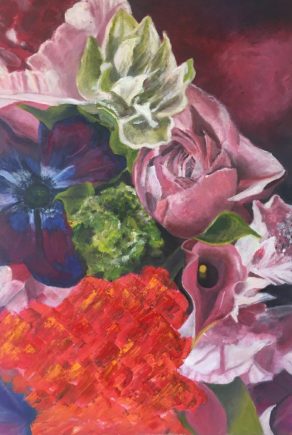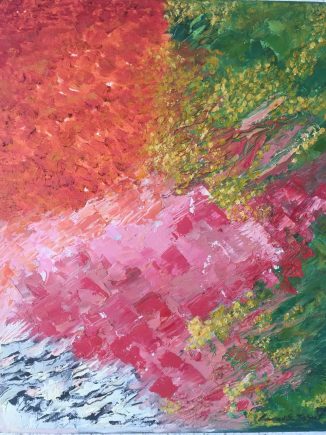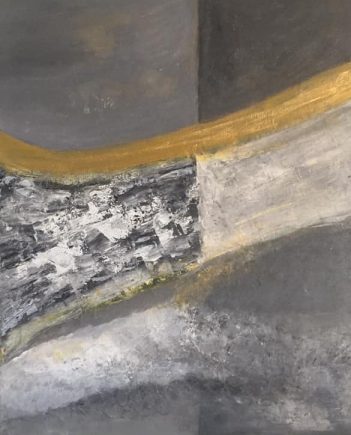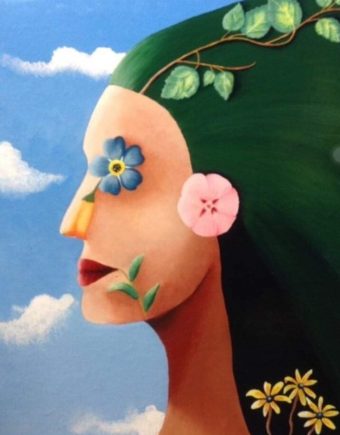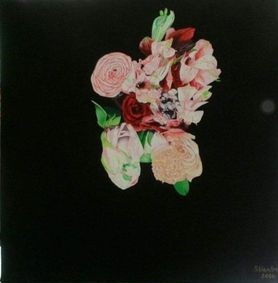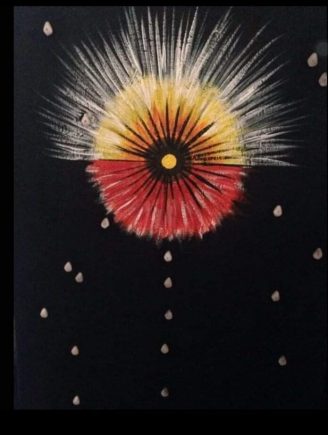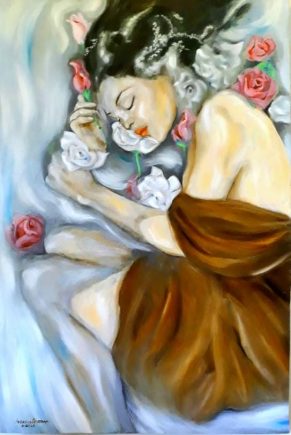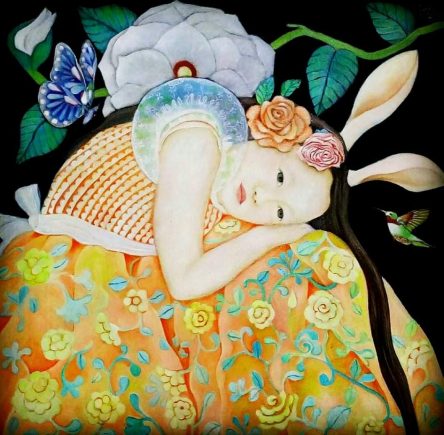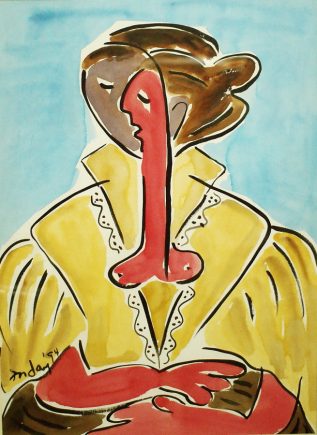"Si PETRONA at ang mga Kababaihan ng Bahay Nakpil-Bautista sa Kontemporaryong Sining” 17 ng Setyembre 2020
ART in MANILA 1880s
Manila reached its peak of prosperity in the 1880’s. Its residents who had profited from trading in the world market developed an avid interest in art, posing for portraits, dedicating rooms with ornately decorated altars in their private homes, displaying paintings and sculptures that were in the classic romantic style which was predominant in European art at that time.
Manila became a center of artistic activities. Art contests became the main event in special celebrations when artists of Quiapo captured top prizes. Filipino artists were also getting recognition in Europe. Encouraged by this, parents who recognized their children’s artistic inclinations, sent them to the Academia de Dibujo y Pintura (Academy of Drawing and Painting), while some families hired tutors.
PETRONA NAKPIL-BAUTISTA
Petrona, then 19 years of age, might have studied under one of its private tutors since women were not allowed to enrol at the Academia. For this reason art tutorials were especially popular for young girls. During the last three final exhibitions of that century, the artists of Quiapo dominated the scene, mostly women.
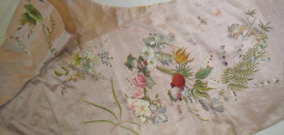
Petrona Nakpil Bautista’s Painting on fabric (from Bahay Nakpil-Bautista Archival Collection)
While Carmen Zaragoza took the First Prize and a certificate in the first exhibition on December 1891, Petrona Nakpil y Garcia placed Fourth Honorable Mention for her landscape in oil. She was 30.
In 1892, the second of the three exhibits which fell on the quadricentennial celebration of the discovery of north America in 1492 included a literary musical, and an art contest. Petrona submitted her entries but did not win. The jurors announced Carmen Zaragoza as winner of the First Prize for her painting, “Dos Intelligencias.”
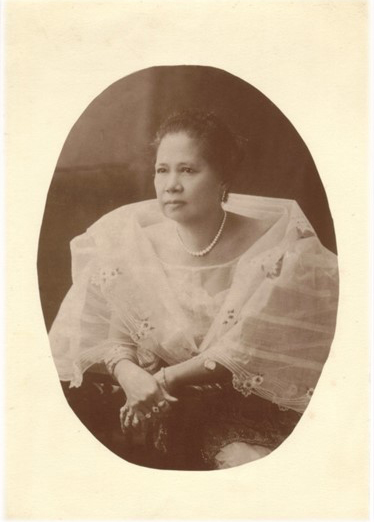
PETRONA is Doña Petrona Nakpil-Bautista, the wife of Dr. Ariston Bautista and sister of Julio Nakpil (Bahay Nakpil-Bautista, Quiapo: Vintage Philippine Island 1920-1959). She is the matriarch of Joyeria Nakpil after the demise of her sister, Luisa Nakpil (Dominic Nakpil Santos Viola). The Quiapo Resident is a visual and jewelry artist who had inspired mostly her family and women of the present day generation.
The last of the exhibits took place a year before the outbreak of the Philippine Revolution, on 23 January 1895. This was the Exposición Regional de Filipinas. Various categories in which the country excelled were represented. In the fine arts category of painting, fifteen women artists participated. Five of them won medals and four won honorable mentions. Three artists came from Quiapo.
One of them was Petrona Nakpil, now 34. Her entries were three paintings in oil. One was a landscape, while the remaining two were described as “executed on a painter’s palette”. She used the pseudonym “Ana Capili” in her entries.
With the fall of the Spanish regime, the Escuela de Bellas Artes y Dibujo closed, and during the American occupation art classes were conducted privately in the homes of prominent painters. But artists resumed their activities.
In 1904, artworks were collected from artists all over the country, and were entered in the St. Louis Exposition, U. S. A. The name of Petrona Nakpil is listed in the art catalogue as “Petrona Nakpil de Bautista”. Petrona submitted two oil paintings Natives [sic] at Work in House and A Native House.

Petrona Nakpil Bautista’s Oil on Canvas (untitled, undated – from Bahay Nakpil-Bautista Archival Collection)
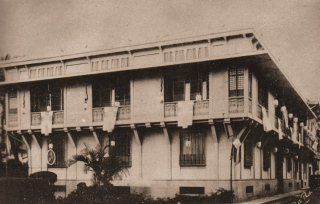
Bahay Nakpil-Bautista, Quiapo Manila (from Bahay Nakpil-Bautista Archival Collection)
Petrona was now 33 and married to Dr. Ariston Bautista-Lin, an avid art collector himself. It is said that she ornamented her own wedding dress with hand-painted flowers.
In 1914 Dr. Ariston Bautista-Lin rebuilt the house in Calle Bautista. It is now known as the “Bahay Nakpil-Bautista”.
Here the Nakpil Platería which was established by her parents, Juana Garcia Putco and Juan Luna Nakpil, continued to flourish. Petrona was an accomplished jewelry designer, as was her brothers Francisco and Ramon. The Platería became well-known because of their distinctive designs and in the meticulous execution of craftsmanship.
In 1948 Petrona Nakpil de Bautista died at the age of 87. Her remains lie beside her husband at the Nakpil-Bautista Mausoleum at the Manila North Cemetery.
Mga Kababaihan ng Bahay Nakpil-Bautista sa Kontemporaryong Sining
Petrona Nakpil Bautista’s artistry left a legacy and has been an inspiration to the family’s next generations. Many have followed her skill, as exhibited in “Petrona and her Progeny” art works at the Bahay Nakpil-Bautista ante sala.
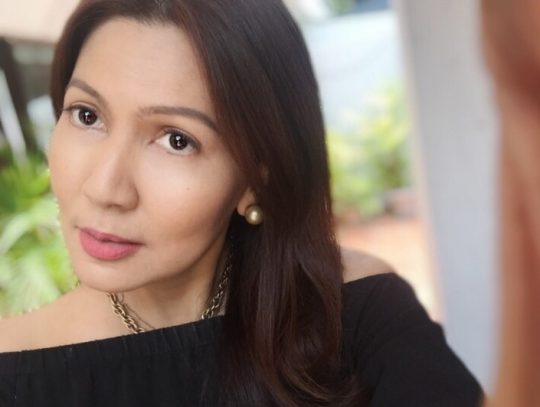
Assunta Nakpil
One of them is ASSUNTA NAKPIL, great granddaughter of Petrona Nakpil Bautista and granddaughter of Juan F. Nakpil, National Artist for Architecture. Her imaginative style captures the duality of abstraction and realism translated through the various medium she uses, predominantly acrylic, oil and watercolor.
(Contact information: +63 917 979 0169 / Instagram: nakpilassunta)
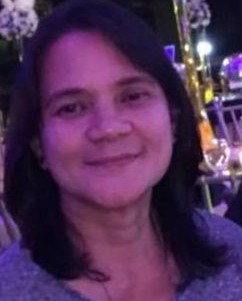
Sandra Herber
SANDRA HERBER is a volunteer docent at Bahay Nakpil-Bautista for more than 5 years who shows great interest and love for flowers as her subject. She is challenged with the use of mixed media. Candor yet meaningful ideas fill her insightful visual artistry which catches curiosity on viewers. Carpentry is another artistic take that gives her pleasure in doing within the historic interior space of the Bahay.
(Contact information: +63 920 502 1963)
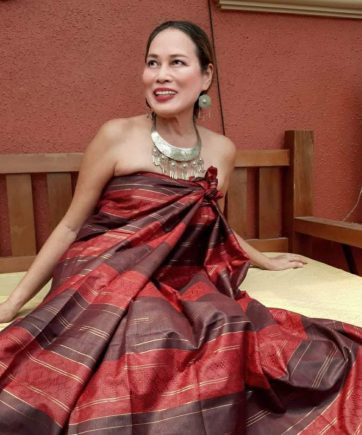
Arlene de Castro Añonuevo
Arlene de Castro Añonuevo, a regular artist participant of exhibits of Bahay Nakpil-Bautista, has a close relationship with the descendants of Gregoria de Jesus vda. de Bonifacio because she is related to the mother of Andres Bonifacio, Catalina de Castro. Her painting of Gregoria de Jesus, “Dugo para sa Kalayaan”, hangs at the entrance of the room dedicated to de Jesus.
Arlene started her career as a visual artist in 2009. She is an AB Sociology graduate from UP Diliman and is currently taking up her second degree in Fine Arts major in Painting also at UP Diliman. She was a member of the Tuesday art group, PPVAI, UWAAP and is presently a member of the ‘Linangan ng Kulturang Pilipino’. Aside from painting, she writes and recites poetry and models for photography.
(Intagram: Adecastroan)
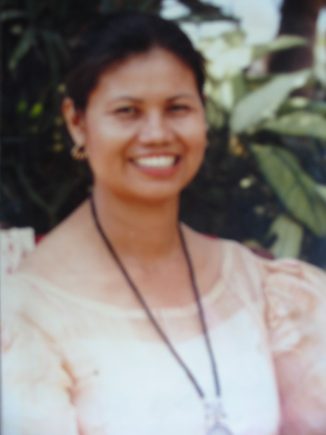
Inday Cadapan
INDAY CADAPAN, a frequent Bahay visitor, had her one-man show at Bahay Nakpil-Bautista last year, 2019. Although she had long been gone but through her daughter Magel Cadapan’s passion, her colorful works are continuously being enjoyed in this time. In 1979, Inday Cadapan was a forty year old who set out to find a visual structure that would allow her to voice out her opinion against poverty and the unjust labor practices. Largely self-taught, she transformed her commentaries into painting to help the people see how they could make their communities pliable.
(Contact information: +63 917 792 9020)
Sa ating kontemporaryong panahon, ang mga babaeng sina Assunta Nakpil, Sandra Herber, Arlene de Castro Añonuevo, Inday Cadapan, at ang kanilang mga obra ang siyang nakapag-bigay buhay, kulay, kasiyahan at saysay sa Isang Daan at Anim (106) na taong Bahay Nakpil-Bautista.

